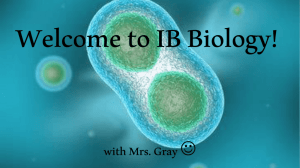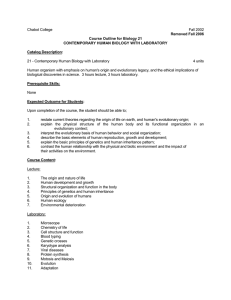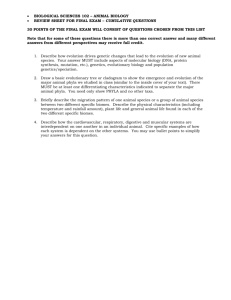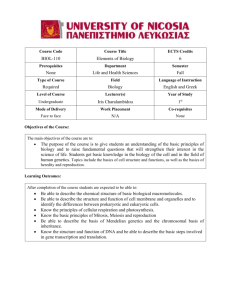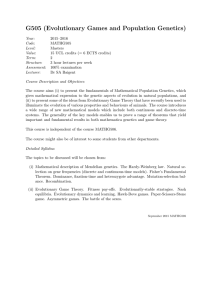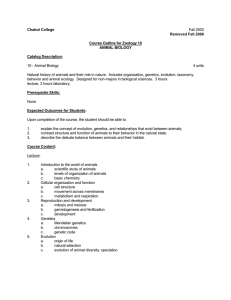Chabot College Fall 2002 20 - Contemporary Human Biology
advertisement
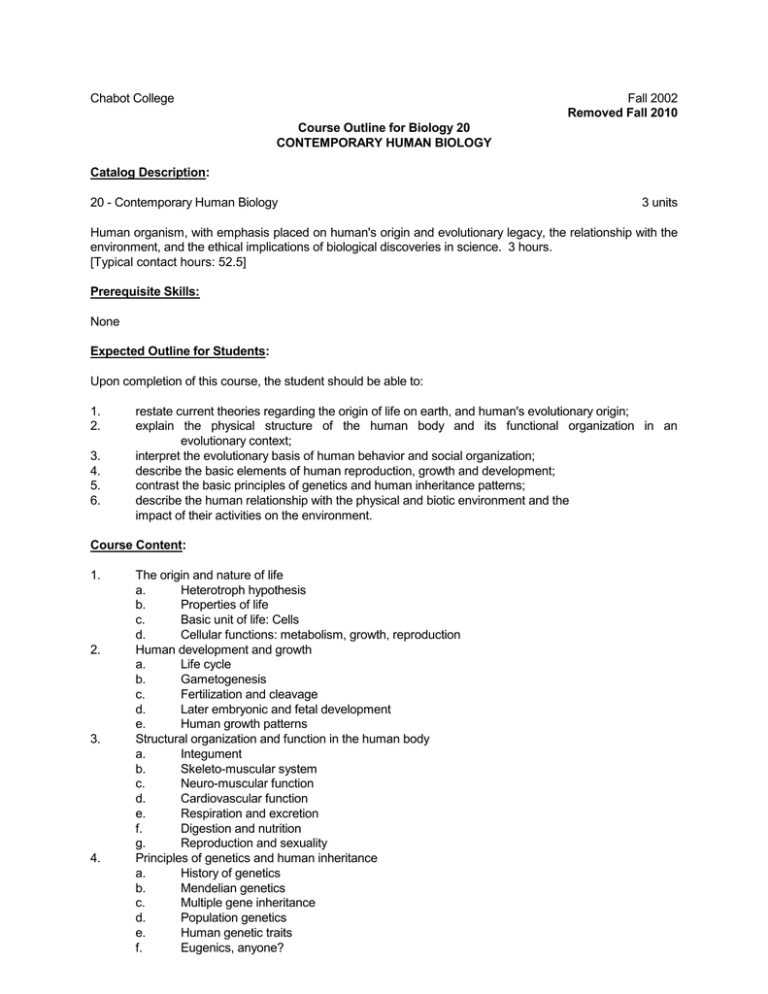
Chabot College Fall 2002 Removed Fall 2010 Course Outline for Biology 20 CONTEMPORARY HUMAN BIOLOGY Catalog Description: 20 - Contemporary Human Biology 3 units Human organism, with emphasis placed on human's origin and evolutionary legacy, the relationship with the environment, and the ethical implications of biological discoveries in science. 3 hours. [Typical contact hours: 52.5] Prerequisite Skills: None Expected Outline for Students: Upon completion of this course, the student should be able to: 1. 2. 3. 4. 5. 6. restate current theories regarding the origin of life on earth, and human's evolutionary origin; explain the physical structure of the human body and its functional organization in an evolutionary context; interpret the evolutionary basis of human behavior and social organization; describe the basic elements of human reproduction, growth and development; contrast the basic principles of genetics and human inheritance patterns; describe the human relationship with the physical and biotic environment and the impact of their activities on the environment. Course Content: 1. 2. 3. 4. The origin and nature of life a. Heterotroph hypothesis b. Properties of life c. Basic unit of life: Cells d. Cellular functions: metabolism, growth, reproduction Human development and growth a. Life cycle b. Gametogenesis c. Fertilization and cleavage d. Later embryonic and fetal development e. Human growth patterns Structural organization and function in the human body a. Integument b. Skeleto-muscular system c. Neuro-muscular function d. Cardiovascular function e. Respiration and excretion f. Digestion and nutrition g. Reproduction and sexuality Principles of genetics and human inheritance a. History of genetics b. Mendelian genetics c. Multiple gene inheritance d. Population genetics e. Human genetic traits f. Eugenics, anyone? Chabot College Course Outline for Biology 20, page 2 Fall 2002 Course Content - continued: 5. 6. 7. Origin and evolution of humans a. Principles of evolution b. Genetic basis of evolution c. History of life on earth d. Primate evolution and migration e. Later human evolution and migration f. Human diversity Human ecology a. Principles of ecology b. Human ecology c. Human reproduction and population growth d. Human population control Environmental deterioration a. Environmental pollution b. Conservation of natural resources c. Environmental and sociological impact of human activities d. Prognosis Methods of Presentation: 1. 2. 3. 4. Lectures Films Tapes 35 mm color slides Assignments and Methods of Evaluating Student Progress: 1. Typical Assignments: a. Textbook readings b. Selected articles to read for discussion 1) Human kind's evolution in the future 2) Human cloning c. Term papers 1) Human impact on the environment 2) Evolution of primates 3) Moral issues of genetic engineering 2. Methods of Evaluating Student Progress a. Written examinations, including final exam b. Special projects Textbook(s) (Typical): Human Biology, Sylvia Mader, Wm. C. Brown Publishers, 2000 Special Student Materials: None. Revised: 2/13/02
